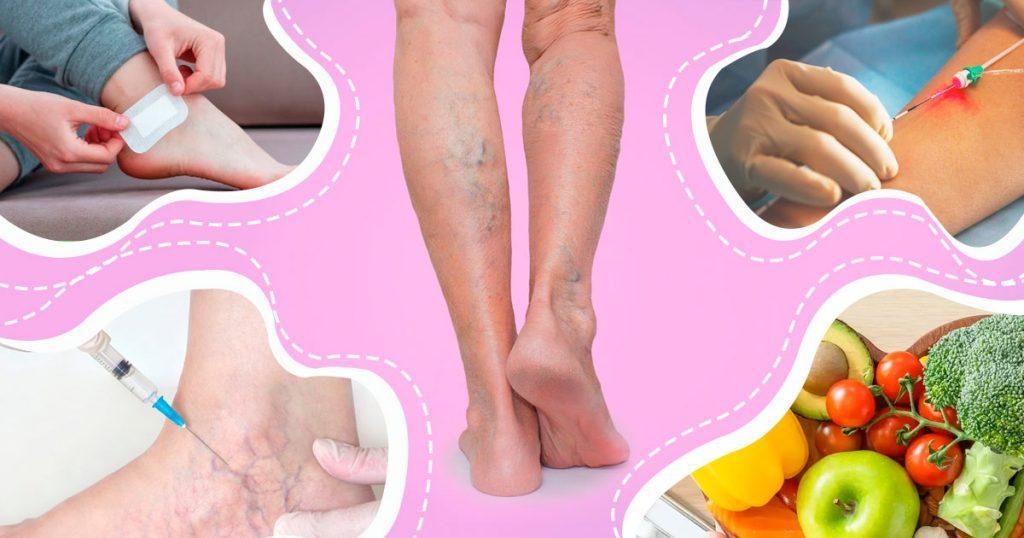Varicose veins are a prevalent medical condition that affects a significant number of individuals in the United States. According to the Society for Vascular Surgery, approximately 35% of Americans are affected by varicose veins, making it a widespread health concern. Varicose veins develop when the veins in the legs become enlarged, swollen, and twisted. Although they are commonly viewed as a cosmetic issue, untreated varicose veins can result in significant health complications. It is crucial to find a cure for varicose veins promptly to avoid potentially fatal consequences.
Importance of Finding a Cure to Varicose Veins
Symptoms associated with varicose veins encompass a variety of sensations, such as pain, discomfort, itching, and swelling. However, the implications go beyond mere physical discomfort. If left untreated, varicose veins can lead to more severe complications such as blood clots, ulcers, skin discoloration, and even deep vein thrombosis, a potentially life-threatening condition.
Traditional surgical treatment for varicose veins, known as vein stripping, has long been a common approach. However, surgical procedures carry inherent risks, including infections, bleeding, scarring, and a lengthy recovery period. Additionally, surgery may not be suitable for everyone, especially those with underlying health conditions or individuals who wish to avoid invasive procedures.
Non-Surgical Varicose Veins Treatments
Fortunately, advancements in medical technology have paved the way for non-invasive treatments that provide effective alternatives to surgery. These treatments are aimed at reducing or eliminating the appearance of varicose veins while minimizing the associated discomfort and complications.
1. Endovenous Laser Therapy (EVLT)
One such non-invasive treatment option is endovenous laser therapy (EVLT). This procedure involves using laser energy to heat and seal off the affected veins, allowing the blood to reroute through healthier veins. Another option is radiofrequency ablation (RFA), which uses radiofrequency energy to achieve a similar outcome.
2. Sclerotherapy
Another frequently employed non-surgical method for varicose vein treatment is sclerotherapy. This procedure entails the direct injection of a solution into the affected veins, resulting in their collapse and subsequent fading. Sclerotherapy is typically well-tolerated and can be performed on an outpatient basis.
3. Endovenous Ablation
Another innovative technique available for treating varicose veins without surgery is endovenous ablation. This technique utilizes heat, either in the form of radiofrequency or laser energy, to cauterize an abnormal vein and reroute blood flow to healthier veins.
4. Medical Adhesive
Furthermore, a type of medical adhesive called VenaSeal™ offers a unique approach to treating varicose veins without the use of heat. This adhesive is particularly suitable for individuals whose affected veins are located near the skin’s surface. By applying the adhesive, the problematic veins can be effectively sealed off, restoring proper blood flow.
5. Microphlebectomy
Microphlebectomy is a procedure where small incisions are made in the skin to remove the affected vein. These incisions are so minuscule that stitches are unnecessary, and the procedure is usually carried out with local anesthesia. Microphlebectomy is especially appropriate for individuals with large, bulging veins.
Following the microphlebectomy procedure, individuals usually wear compression stockings for about a week to promote healing. However, they can typically walk immediately after the procedure and resume normal activities without significant downtime. This approach offers a convenient and effective option for individuals seeking to address varicose veins while minimizing the impact on their daily routines.
It is important to consult with a qualified healthcare professional to determine if microphlebectomy is a suitable treatment option based on individual circumstances and the specific characteristics of the varicose veins. They will provide guidance on the appropriate course of action and any necessary post-procedure care.
6. Healthy Lifestyle
Other non-invasive approaches include compression stockings or socks, which provide support and improve blood circulation, and lifestyle changes such as regular exercise, maintaining a healthy weight, and avoiding prolonged periods of sitting or standing.
Exploring Non-Invasive Options to Get Rid of Varicose Veins without Surgery
It is important to note that consulting with a qualified healthcare professional, particularly a vascular surgeon, is crucial in determining the most appropriate treatment plan for individual circumstances. They can provide expert advice and guide individuals towards the most effective non-invasive treatments for their varicose veins.
Adopting lifestyle modifications like engaging in regular exercise, maintaining a healthy weight, and avoiding extended periods of sitting or standing can play a significant role in enhancing venous health. Using compression stockings or socks can also provide support and enhance blood circulation, alleviating discomfort and reducing the appearance of varicose veins.
By exploring these non-surgical options and making necessary lifestyle changes, individuals can effectively manage and potentially eliminate varicose veins, improving their overall well-being and quality of life. Remember, early intervention and seeking the advice of medical professionals are key in addressing varicose veins effectively and avoiding potential complications.

